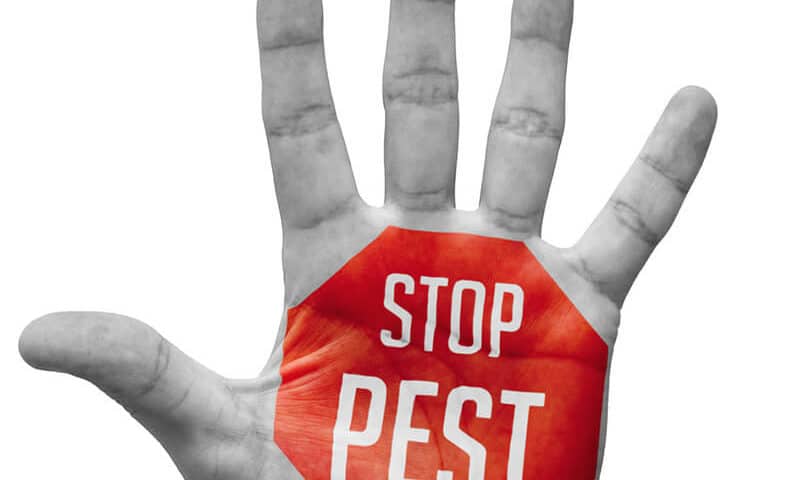The Basic Principles Of Pestwise
The Basic Principles Of Pestwise
Blog Article
How Pestwise can Save You Time, Stress, and Money.
Table of ContentsThe Single Strategy To Use For PestwiseAll about PestwiseThings about PestwiseSome Known Details About Pestwise About PestwiseSome Ideas on Pestwise You Need To Know3 Simple Techniques For Pestwise

Q. Specify "integrated parasite administration" (IPM) and list numerous possible control methods that may be made use of in an IPM technique. A. Integrated bug administration is the incorporating of proper insect control methods into a solitary plan to lower bugs and their damage to an acceptable degree. Pest control methods may consist of: host resistance, organic control, cultural control, mechanical control, cleanliness, and chemical (pesticide) control.
Some Known Factual Statements About Pestwise
What can you do to maintain the parasites you are trying to control from becoming resistant to the pesticides you utilize? A. Parasite resistance can be reduced by using incorporated parasite monitoring and rotating the types of chemicals used.
Pests are an important risk to the farming service, and incorporated pest management helps cultivators address and alleviate these risks. Integrated parasite monitoring makes use of numerous approaches in facility, hence being a more effective solution to the issue. Mosquito Control. In particular, eliminating hostile chemical approaches enables lessening damage to people and the atmosphere by using natural and safer options rather
All about Pestwise
The objective of incorporated parasite monitoring is to lessen this harm and control appropriate problem degrees instead of eradicate all unwanted populaces. This is why it is essential to understand what actions are justified in each instance and use hostile ones only when various other integrated management methods don't function. Integrated administration reduces the adverse repercussions of a non-IPM technique, and the major benefits of IPM Perks of IPM.
A correct understanding of the invasion range figures out if the problem ought to be resolved. are the next parts of an IPM program because it is vital to realize if the microorganisms make prospective threats and pick the integrated monitoring choices or the particular chemical use. mean to lower infestations by using various agronomic techniques.
The Basic Principles Of Pestwise
Integrated management alternatives in an IPM program beginning with much safer to a lot more aggressive ones. The above-mentioned integrated administration aspects assist comprehend how to plan and apply an IPM program action by action: Display your plants on a regular basis.

Amongst others, IPM social methods consist of the following field administration techniques: soil treatment; choice of ideal plants; plant rotation; interplanting or strip chopping; selection of growing dates; weed control; use of catch plants. Beneficial dirt problems speed up plant development, and strenuous crops are a lot more immune to infestations. Healthy seedlings and seeds predetermine effective plant growth, so it is important to choose pest-free growing product with strong origins.
Hence, to name a few applications, plant rotation can be successfully made use of as an incorporated pest management method. Pests spread slower if rows of different crop types separate their host plants in intercropping or strip cropping, which is additionally utilized in the incorporated bug monitoring system. Alternatively, problems enhance when plants of the exact same crop type or family grow together.
In a similar way, potato beetles can harm expanding potatoes, in addition to tomatoes. Planting catch plants in patches is one more option for IPM intercropping. This incorporated parasite monitoring technique suggests drawing in insects to certain plants and then controlling them with chemical or mechanical strategies. Specifically, you can grow soybeans as catch crops for Japanese beetles.
10 Easy Facts About Pestwise Described
Obstacles are case in points of physical IPM techniques. Let's a knockout post take a better take a look at them. Getting rid of or picking parasites out manually is a time and labor-consuming choice that is widely used in integrated administration and chemical-free farming. Mature bugs or their eggs and larvae are collected by hand and ruined.

Division of Plant Sciences. This integrated administration technique suggests a typical means of damaging pests by predators, parasitoids, pathogens, and other biological control representatives (aka antagonistic organisms). The role of organic control in IPM is to.
The Ultimate Guide To Pestwise
With time, their populace ended up being a genuine hassle to farmers alongside indigenous kangaroos or dingoes. The walking cane toad is an additional situation illustrating integrated organic control failure in this regard when it refused to quest the target types and became a pest itself. Parasitoids create on or within their hosts to at some point eliminate them after maturing.
Report this page